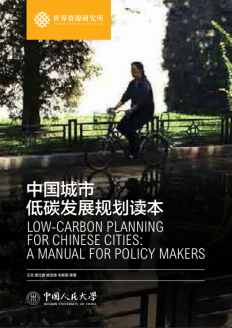Low Carbon Planning for Chinese Cities: A Manual for Policy Makers
In the context of drafting the 13th Five Year Plan and China’s New Type Urbanization Development, this report summarizes the practices of low-carbon programs in Chinese cities and provides a guideline for low-carbon city development planning that suit the unique situation of Chinese cities. This Manual focuses on introducing domestic and international experiences in low-carbon city development, including background, concept, position and progress.

Cities are not only the main consumers of energy and sources of greenhouse gas emissions, they also play a key role in improving energy efficiency, driving low-carbon in manufacturing and living as well as innovation in new low-carbon technologies. The considerable land mass and huge population of China means that national strategies and policies must be allocated to provincial and even city levels before they can be effectively implemented. The vast majority of economic activity in terms of investment and consumption also happens in cities. Therefore, cities are key considerations in China’s implementation of national strategies and policies on climate change and energy.
Built upon the analysis of domestic and international background of Chinese cities’ low carbon development, this report then positions the low carbon plan in a city’s planning system. After evaluating the status quo of low carbon development planning in Chinese cities, we find Chinese cities are gradually developing a framework for low carbon city development that is uniquely Chinese, which initially developed from scratch, borrowed experiences from other countries and then localized them according to conditions in China. Meanwhile, Chinese cities face common challenges in low carbon planning, and solutions for these challenges will be put forward in this report. This report lays out steps, contents and methods of low carbon city planning in China, and proposes a framework for identification of low carbon development goals and key sectors.